A rainy day in Hue
Hue is a small city with a population of well under 1 million people. We were surprised to hear that its primary industry is education, with almost half the population being students at one of the cities 16 universities and 3 colleges.
We were also surprised to learn that it was once the capital of "Vietnam" - hang on wasn't Hanoi that capital after the 1000 years of Chinese occupation?`
A bit more detail reveals that the story is a bit more involved. Historically modern day Vietnam was three main kingdoms,
The northern Kingdom which was occupied by the Chinese, and of which Hanoi became the capital after the Chinese.
The central Kingdon of which Hue was the capital and which was never occupied by the Chinese.
The Southern Kingdon of which Saigon was the capital.
And, finally Hue was the capital of the whole of Vietnam during the Nguyen dynasty from 1802 to 1945. The emperor Tu Duc was one of the rulers of this dynasty and he is the longest servicing ruler of Vietnam. I mention him because he was central to our sightseeing today.




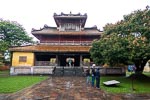
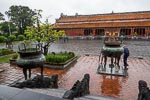
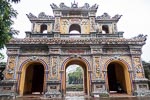

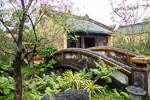


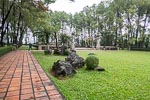
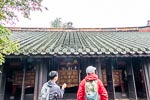
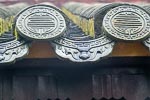


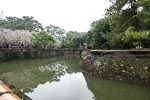
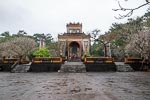
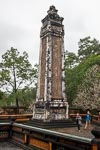
We happened to be in Hue during a period of rain so today was not a great day for photography. Never the less we spent some time exploring the Citadel which was the living and administrative quarters of the Nguyen dynasty. It was badly damaged during what the Vietnamese call "The American War", and is gradually being restored.
At the end of the day we visited Tu Ducs tomb, which turned out to be a massive complex of many acres. It seems that before it was his tomb it was his summer palace where he went when he wanted to write poetry, do some painting or a bit of hunting.
After his death Tu Duc he was supposedly buried there, along with 99 of his servants, whom I guess "volunteered" to join him. Thus there are 100 bodies buried in the same area in order that grave robbers and future rulers would not be able to dig up Tu Ducs body.
But it seems the real story is that the Tu Duc is not buried at his tomb but at some undesclosed site in the Hue area and that the 200 workers who carried out the burial were killed to prevent the location of the site becoming known.
Tu Duc ruled for almost 36 years, a good thing too because it took he and his advisors 6 years to find a suitable location for his tomb and 4 years and 10,000 workers to build it.